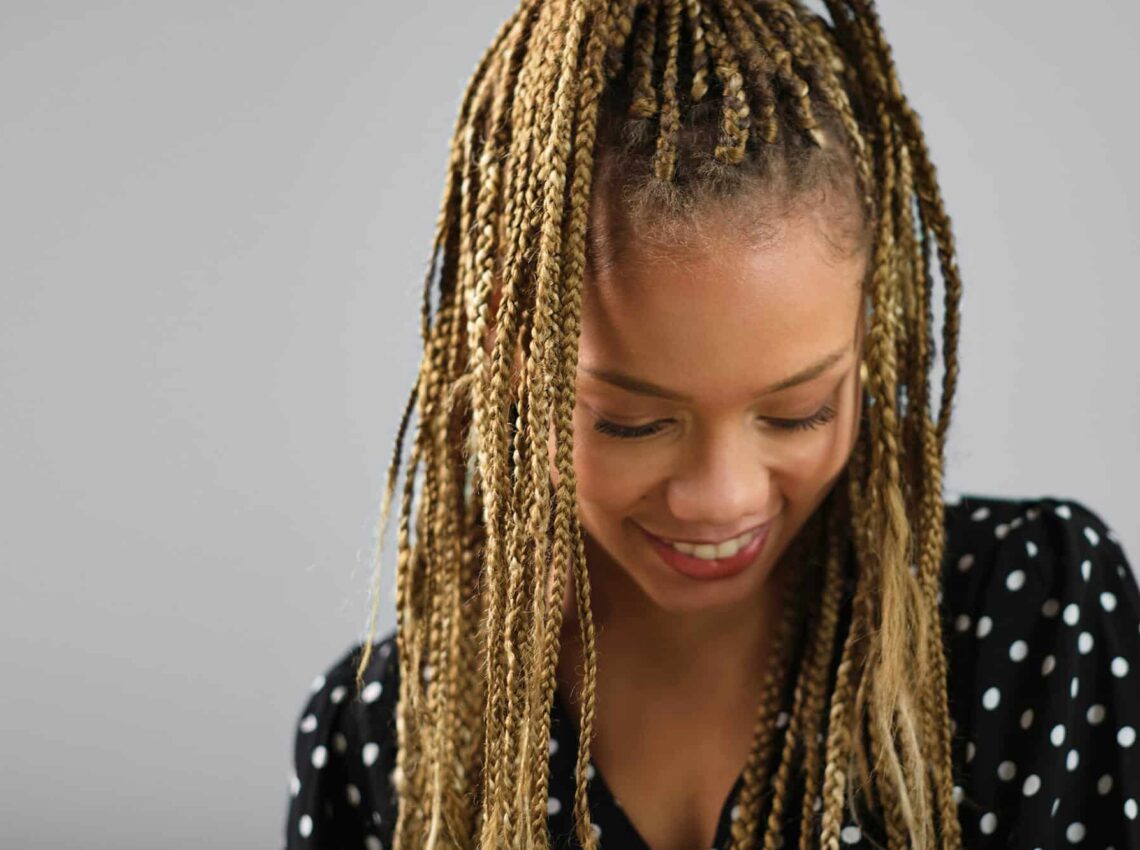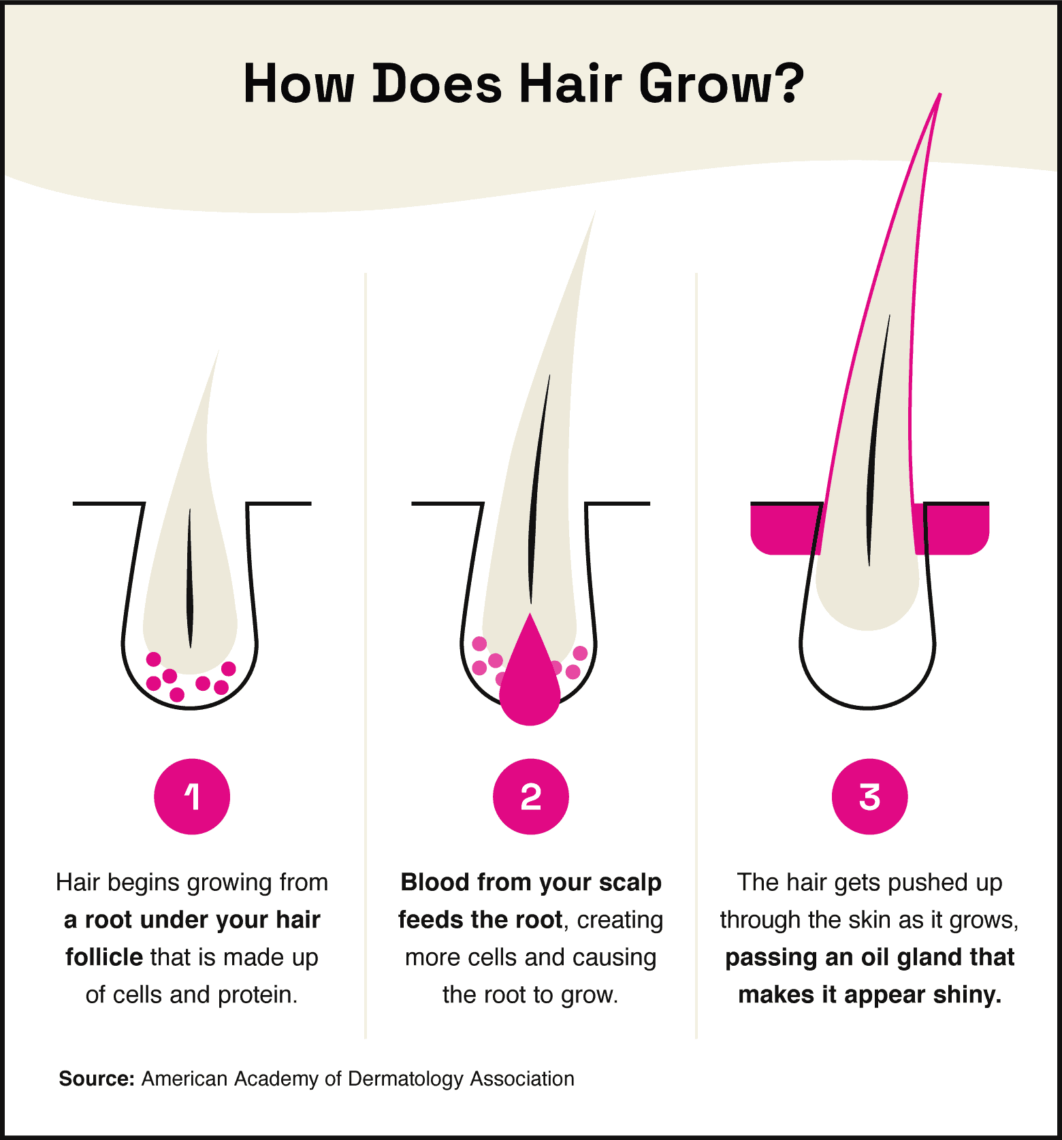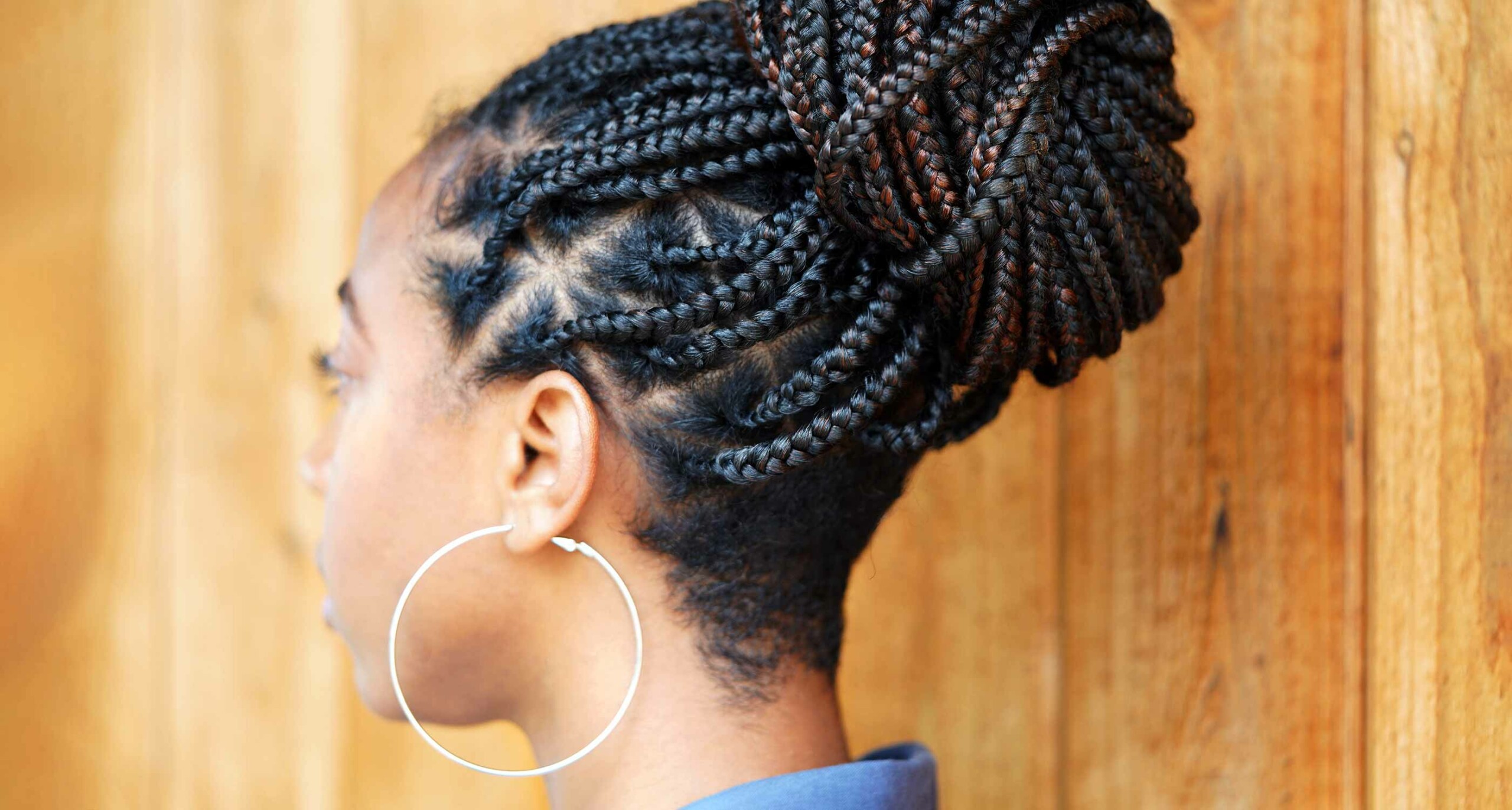Do Braids Help Your Hair Grow?

Styling your hair into braids doesn’t directly make it grow faster. However, these styles can help nurture and protect your hair, making it stronger and less likely to break. To understand how this works, let’s first look at how hair grows.
Did you know that you’re born with all the hair follicles you’ll ever have? And about 100,000 of these follicles are on your head. Hair grows when blood in your scalp goes to these follicles and supplies oxygen and nutrients, which help the hair roots beneath the follicle grow longer.
With such a complex internal process supporting hair growth, no one hairstyle can have a huge impact. At the, well, root of hair growth are things like genetics, protein, nutrients, scalp health, and even diet.
But even so, weak hair is more likely to break, which can prolong the growth process as older hair continues to break off, or has to be cut off as it becomes dried and frayed. That’s where styles like braids come in. Braids can help protect the strength and moisture of your hair, keeping it healthy as it grows.

What Are The Benefits Of Braiding Your Hair?
Braiding your hair can help with its strength and texture whether your hair that is curly, straight, or anything in between. For one, braids can help make your hair structurally stronger and prevent breakage, especially while sleeping. Braids can reduce the friction between the hair and the pillow, making it less likely to break during the night.
Think of it like a rope: when rope fibers are wound together, the rope is stronger than if these pieces were separate. Hair is similar: When you twist pieces of hair around each other in a braided style, the hair becomes stronger than it would if you left it loose or tied it into a ponytail, which doesn’t require twisting.
Braiding can also help keep your hair nourished and healthy. Braiding locks hydration into the hair, preventing dryness and frizziness. To add to this specific benefit, braiding the hair with oil can also increase the moisture.
Can Braids Damage Your Hair?
Braids can do damage to your hair if they’re left in for too long or pulled too tightly during installation. Pulling the hair too tightly while braiding it can actually have the reverse effect and cause it to break rather than become stronger.
Essentially, tight or heavy braids pull on the hair follicles and cause damage. Sustained pressure on the hair follicles can cause conditions like hair loss. To prevent this from occurring, it’s a good idea to loosen your braids, take breaks in between braided hairstyles, and massage the scalp with essential oils. Really tight braids aren’t great for thin hair, but there are still plenty of great styles for thin hair that are safe to wear.

What Are Some Popular Braided Styles?
Braided hairstyles are popular among many different cultures. Those with Afro-textured hair, for example, often sport box braids. To install box braids, a Pro stylist sections the hair into squares and braids each individual square into its own braid. Box braids can be done with natural hair, or hair extensions can be braided into the scalp.
While it’s not recommended to wear braided styles for too long, braided styles for Afro-textured hair can be worn for weeks at a time. A few examples of these types of styles are the following:
- Box braids
- Ghana braids
- Microbraids
- Cornrows
- Goddess braids
- Feed-in braids
Other popular braided hairstyles include the French braid, Dutch braid, and fishtail braid. These are all variations on a similar theme that involves taking strands of hair and twisting them around each other to stick close to the scalp and travel down to the nape of the neck in either a single strand or two strands.
How Can I Care For Braided Hair?
You know how impossible it can be to get a necklace free when it’s wrapped around other pieces of jewelry? Hair can be similar. Tangled hair might clump together, making it impossible to brush or braid. And braiding tangled hair can only make it worse.
For best results, make sure hair is washed, moisturized, and detangled before braiding. Washed and detangled hair will better lock moisture in once it’s braided, but it will also be easier to braid in general.
While your braids are in, especially if you’re wearing a hairstyle like box braids that will be in for a long time, you’ll want to regularly clean and moisturize your scalp to reduce pressure. At night, sleeping with a headscarf or wrap can also keep your braids protected.
How Long Can I Keep My Hair In Braids?
How long you can keep your hair in braids will vary depending on the intensity and type of braid you get. As a general rule, it’s recommended that you leave braids in for no longer than two months. The longer braids are in, the more they will pull on your hair follicles and scalp. Over time, this sustained pressure can hurt your hair.
And just as braids can lock in moisture, they can also lock in dirt and oil. Keeping your hair clean in braids can be more difficult, so after a few months with braids in, you may want to remove them to give your hair a good cleaning.
If you’re wearing a braided hairstyle that will be in for multiple weeks or months, you can also wash the braids every so often to keep them clean. Washing, combined with scalp care and protection, should help sustain the hairstyle while making sure your hair and scalp remain healthy. Taking care of your braids can help them last longer.

What Are Some Proven Ways You Can Encourage Hair Growth?
While braiding your hair may not be a direct link to hair growth, there are other ways you can encourage it.
For one, take care of your hair by avoiding things like heat and hair dye. While straightening curly hair or curling straight hair may achieve a desired stylistic look, these things can also negatively impact the strength of your hair. Heat styling devices like flatirons and curling irons can cause damage to hair keratin, which can cause breakage when the hair is combed.
Similarly, the chemicals in hair dye can also damage hair and cause thinning and breakage. To make sure your hair is properly taken care of after dyeing, have a Pro dye the hair or avoid it altogether.
Though it might seem that there wouldn’t be a connection between what you put into your body and how hair grows out of your head, there are links between the two. Restrictive dieting, for example, can cut your body off from nutrients that it needs to support hair growth. And when the body is under stress from dieting, hair growth will usually be stopped.
Eating certain foods can help increase the nutrients needed to make hair grow. As hair grows when the blood provides nutrients to the hair roots, certain foods can boost these nutrient levels. Foods that can encourage hair growth include eggs, fish, beans, and nuts.
Though braids don’t have a direct impact on hair growth, they have an impact on hair health. They can help growing hair stay healthy and strong, keeping it moisturized while it continues to grow. For more information on hair braiding and health, visit a hair Pro in your neighborhood and discuss your style options.


